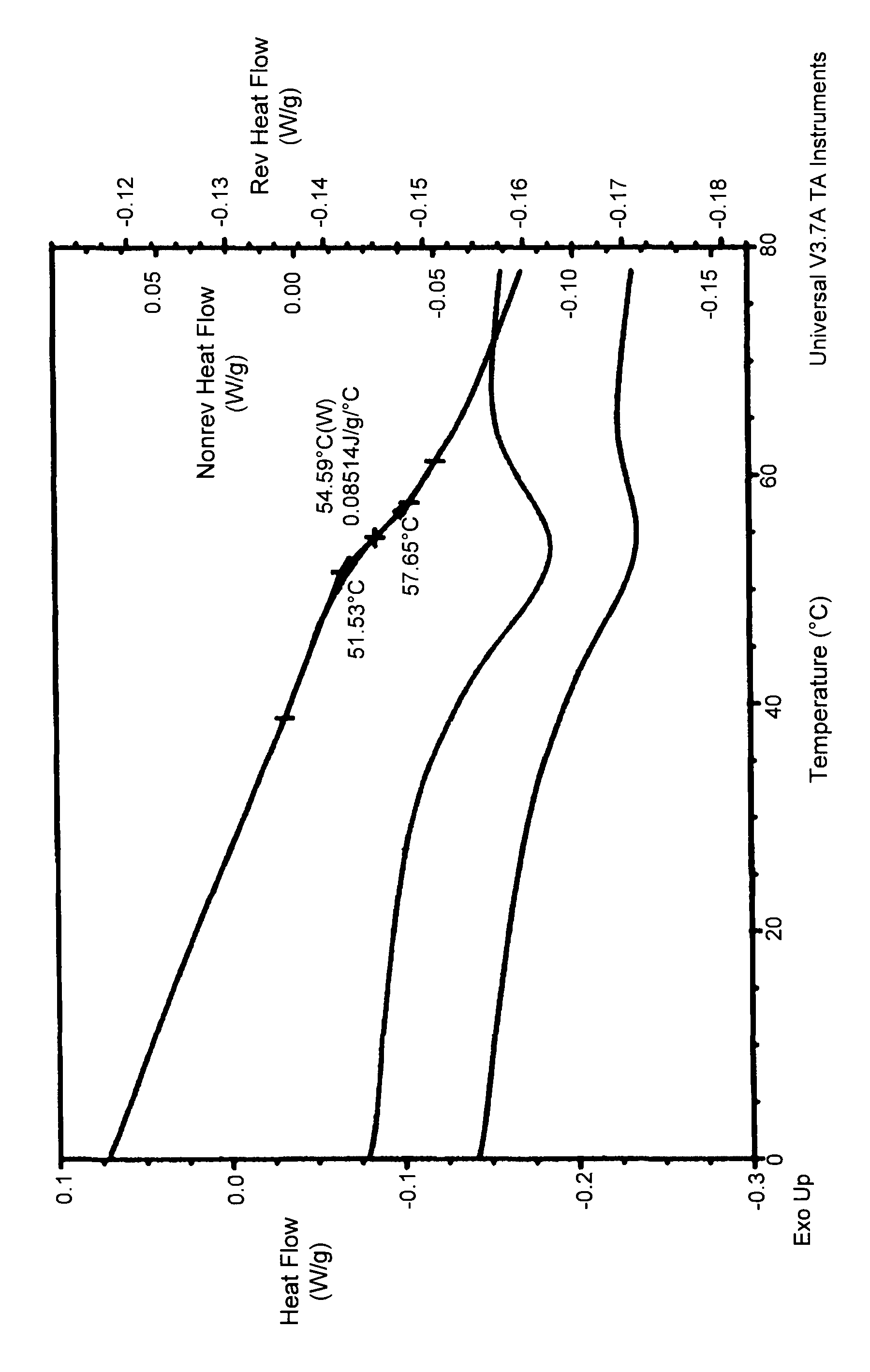Melt extrusion encapsulation of flavors and other encapsulates in a carrier containing spices and herbs
a technology of flavor and other encapsulates, which is applied in the field of encapsulation compositions, can solve the problems of complex or natural flavor mixtures with low molecular weight components that exhibit high vapor pressure, lose or disproportionately, and achieve the effect of antioxidant functionality, unique flavor delivery and health benefits
- Summary
- Abstract
- Description
- Claims
- Application Information
AI Technical Summary
Benefits of technology
Problems solved by technology
Method used
Image
Examples
example 1
[0099]A matrix composition consisting of 47.93% by weight of OSAN-starch (Emcap 12634, Cargill), 20% of ground oregano, 27.97% of lactose, 4.0% of dextrose monohydrate, and 0.1% of a powdered licorice extract was dry blended and fed at a rate of 114 g / min into the extruder. Deionized water was metered into the feed port at 3 g / min. The extruder jacket temperature was maintained at 250° F. A flavor containing by weight 40% of butter oil, 37.4% of sunflower oil, 14% of glycerol monooleate, 6% of glycerol lactopalmitate, 2.5% of vanilla extract, and 0.1% of hazelnut flavor was metered into the mix at 7.8 g / min. The encapsulate composition was extruded through a 0.036″ multi-orifice die without puffing and the resulting solid was cooled by a cold airflow to yield a brittle solid in approximately 2 to 3 seconds. The resultant solid was characterized by MDSC (modulating differential scanning calorimetry) as a glass, with a glass transition temperature (Tg) of 44.9° C. The product had 7.6%...
example 2
[0100]A matrix composition consisting of 59.9% by weight of maltodextrin 10 DE, 20% of ground oregano, 10% of beta-cyclodextrin, 10% of dextrose monohydrate, and 0.1% of a powdered licorice extract was dry blended and fed at a rate of 114 g / min into the extruder. Deionized water was metered into the feed port at 3 g / min. The extruder jacket temperature was maintained at 250° F. Sunflower oil was metered into the mix at 7.2 g / min. The encapsulate composition was extruded through a 0.036″ multi-orifice die without puffing and the resulting solid was cooled by a cold airflow to yield a brittle solid in approximately 2 seconds. The resultant solid was characterized by MDSC (modulating differential scanning calorimetry) as a glass, with a glass transition temperature (Tg) of 54.7° C. The product had 6.8% moisture as determined by Karl Fisher analysis and 1.445 g / cc true specific gravity of the glassy particles as determined by a helium pycnometer.
example 3
[0101]A matrix composition consisting of 80% by weight of maltodextrin 10 DE and 20% of a red pepper powder was dry blended and fed at a rate of 114 g / min into the extruder. Red pepper powder contained by weight 17.27% of total lipids and 10.34% of total sugars. Deionized water was metered into the feed port at 10 g / min. The extruder jacket temperature was maintained at 250° F. Sunflower oil was metered into the mix at 6.4 g / min. The encapsulate composition was extruded through a 0.086″ multi-orifice die without puffing and the resulting solid was cooled by a cold airflow to yield a brittle solid in approximately 15 seconds. The resultant solid was characterized by MDSC (modulating differential scanning calorimetry) as a glass, with a glass transition temperature (Tg) of 48.9° C. The product had 8.2% moisture as determined by Karl Fisher analysis and 1.423 g / cc true specific gravity of the glassy particles as determined by a helium pycnometer.
PUM
| Property | Measurement | Unit |
|---|---|---|
| glass transition temperature | aaaaa | aaaaa |
| size | aaaaa | aaaaa |
| density | aaaaa | aaaaa |
Abstract
Description
Claims
Application Information
 Login to View More
Login to View More - R&D
- Intellectual Property
- Life Sciences
- Materials
- Tech Scout
- Unparalleled Data Quality
- Higher Quality Content
- 60% Fewer Hallucinations
Browse by: Latest US Patents, China's latest patents, Technical Efficacy Thesaurus, Application Domain, Technology Topic, Popular Technical Reports.
© 2025 PatSnap. All rights reserved.Legal|Privacy policy|Modern Slavery Act Transparency Statement|Sitemap|About US| Contact US: help@patsnap.com

